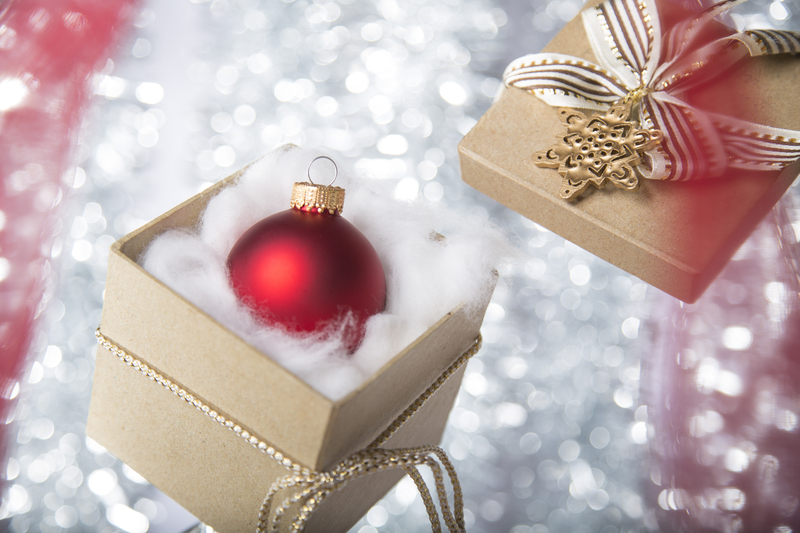Giving Old Kitchenware a Second Chance With Creative Recycling
In an age of sustainability and conscious living, giving old kitchenware a second chance through creative recycling not only helps reduce landfill waste but also unleashes a wave of inspiration in home decor and utility. From tarnished kettles to chipped plates, your once-trendy culinary tools can find new purpose and beauty. Let's embark on a journey to transform forgotten kitchen relics into treasures with sustainable and innovative ideas!

Why Recycle Old Kitchenware?
Every year, millions of pieces of kitchenware are discarded, adding to the growing global waste issue. Most kitchen utensils and accessories are made of metal, ceramic, glass, or durable plastic--materials that do not decompose quickly. Instead of tossing them away, creative recycling offers a pathway to sustainability, art, and personal fulfillment.
- Reduces landfill waste and conserves natural resources.
- Brings creativity and individuality to your home decor.
- Preserves the life and memories of treasured items.
- Saves money on purchasing new organizational and decorative items.
- Contributes to a sustainable lifestyle and demonstrates eco-friendly values.
Creative Ways to Recycle Old Kitchen Utensils
Repurposing Metal Kitchenware
Metal pots, pans, and cutlery can be reborn in countless imaginative ways. Their sturdy construction and charming patina make them perfect for indoor or outdoor projects. Here are some innovative approaches to upcycling old kitchenware made of metal:
- Garden Planters: Convert colanders, kettles, and teapots into quirky garden planters. Just add a bit of soil and your favorite flowers or herbs. The built-in holes in colanders offer excellent drainage!
- Wall Hooks and Racks: Old forks, knives, or spoons can be bent and mounted onto a piece of wood to create unique wall hooks for keys, towels, or jewelry.
- Wind Chimes: Hang ladles, whisks, and spoons from a metal ring or an old sieve for a whimsical wind chime that's music to your ears--and the environment.
- Candle Holders: Large spoons or muffin tins can become beautiful holders for tealight candles, bringing vintage charm to your space.
Reimagining Glass and Ceramic Dishware
Chipped mugs, cracked plates, and glassware with scratches may seem destined for disposal, but their aesthetic appeal can be easily rediscovered with recycling ingenuity. Here's how to give old dishware a second chance:
- Mosaic Art: Break old ceramic plates and mugs into pieces to create stunning mosaic tabletops, garden stones, or wall art. The varied colors and patterns offer endless creative potential.
- Planters and Vases: Single cups, teapots, or sauce bowls that have lost their sets make charming planters for succulents and cut flowers. Group several pieces for a whimsical centerpiece.
- Photo Frame Embellishments: Adorn plain photo frames with fragments of ceramic or glass, using glue and grout, for a personalized, artistic border.
- Jewelry Holders: Stacked teacups and saucers glued together can be transformed into elegant organizers for rings and earrings on your vanity.
Breathing New Life Into Wooden Utensils
Wooden spoons, rolling pins, and cutting boards develop character and nostalgia with age, but even when they're no longer kitchen-ready, they can be revived in creative ways.
- Decorative Signs: Paint or wood burn inspirational quotes onto old cutting boards for rustic wall art in your kitchen or entryway.
- Garden Markers: Use old wooden spoons as plant markers--simply paint the herb or vegetable name on the handle and stake them in your garden or planters.
- Children's Crafts: Let children express their creativity by turning washed wooden utensils into puppets or toys with paint and fabric scraps.
Practical Tips for Recycling Old Kitchenware
Successful kitchenware upcycling begins with selection and preparation. For safety, always clean and sanitize items before repurposing. Consider the following steps for best results:
- Inspect for Damage: If sharp edges are present, file or sand them down to avoid injury.
- Sanitize Thoroughly: Especially for planters or crafts that children will handle, proper cleaning is essential.
- Choose Suitable Paints and Adhesives: Opt for non-toxic, weather-resistant products for projects exposed to moisture or sunlight.
- Get Creative: Mix and match items for unique results. For example, a teapot on a muffin tin can be turned into a bird feeder.
Unique DIY Projects Using Old Kitchen Tools
Looking for hands-on inspiration? The following DIY ideas show how creative recycling can turn outdated kitchen tools into objects both functional and delightful:
Muffin Tin Organizer
Old muffin tins make excellent organizers for small items such as office supplies, jewelry, coins, or crafting materials. Paint the tin in fun colors, or line each cup with decorative paper for flair. Stackable and easy to store, muffin tin organizers fit perfectly inside drawers or on work desks.
Colander Light Fixtures
Create industrial-chic lighting by transforming a metal colander into a pendant lamp. All you need is a hanging light kit and your chosen colander. Punched holes in the colander cast beautiful patterns on walls and surfaces, making your recycled kitchenware a stunning conversation piece. Always enlist a licensed electrician for installation.
Rolling Pin Towel Bar
Turn an old wooden rolling pin into a rustic towel bar for your kitchen or bathroom. Attach brackets to each end, mount it securely to the wall, and hang towels or dishcloths for easy access and a vintage touch.
Grater Pencil Holder or Lantern
An old metal cheese grater can find new life as a pencil holder on your desk or a lantern for ambient lighting. If using as a lantern, simply place an LED candle inside and enjoy the patterned glow.
Eco-Friendly Benefits of Kitchenware Recycling
Choosing to give old kitchenware a second chance through creative recycling delivers a powerful statement about environmental responsibility. Here's why:
- Decreases Raw Material Demand: Repurposing household items reduces the need for new goods, conserving valuable resources.
- Minimizes Pollution: Limiting waste sent to landfills curtails greenhouse gas emissions and chemical leaching.
- Promotes Creativity: Engaging in DIY recycling fosters self-expression and mindfulness, making sustainability enjoyable and rewarding.
- Community Engagement: Recycled art and upcycled products encourage discussion, inspire others, and support a cultural shift toward sustainability.
How to Start Your Kitchenware Upcycling Journey
Ready to recycle old kitchenware? Here's a step-by-step guide to getting started with creative kitchenware upcycling:
- Audit Your Kitchen: Look through cupboards and drawers for utensils and tools no longer in use, but with potential for repurposing.
- Gather Inspiration: Browse craft websites, blogs, and social media for ideas and tutorials. Pinterest and Instagram are excellent resources.
- Collect Supplies: Make a list of necessary supplies, such as paint, glue, brushes, and mounting hardware. Visit local hardware or craft stores, or use what you already have.
- Plan Your Projects: Sketch designs or save images for reference. Decide on color schemes, themes, and final locations for each project.
- Get to Work: Set aside time for crafting and enjoy the process without worrying about perfection--let creativity guide you.
- Share Your Creations: Show off your upcycled kitchenware on social media or in local upcycling communities to inspire others.
Beyond the Kitchen: Extending the Lifecycle of Home Goods
Once you discover the joys of recycling old kitchen tools, consider expanding your efforts into other household areas:
- Repurpose Furniture: Turn an old dining chair into a plant stand or a weathered door into a headboard.
- Transform Textiles: Reimagine old towels as cleaning cloths or aging tablecloths as stylish tote bags.
- Reinvigorate Electronics: Donate older appliances for repair or use functional parts for hobby projects.
Frequently Asked Questions (FAQ) about Kitchenware Recycling
Can every piece of old kitchenware be recycled?
Most kitchenware can be creatively recycled, but check for hazardous materials, sharp edges, or items that may contain lead paint or other toxins. When in doubt, research the materials or consult with a recycling facility before repurposing.
What paint is safe for items that might be used for food again?
Always look for food-safe** or **non-toxic paint** brands when painting kitchenware that will hold food. However, for purely decorative items, standard crafts paints are generally fine.
Can I donate old kitchenware instead of recycling myself?
Yes! If your kitchenware is still functional, consider donating to charity shops, community centers, or thrift stores. Some organizations refurbish kitchenware for those in need.

Conclusion: Transform with Purpose
Giving old kitchenware a second chance through creative recycling** is more than just a trend; it's a meaningful lifestyle choice that celebrates ingenuity, sustainability, and connection to our everyday objects. With each project, you not only divert waste from landfills but also cultivate a home filled with personality and eco-conscious charm. So, open your cupboards, let your imagination flourish, and start your journey in transforming yesterday's kitchenware into today's treasures!
Additional Resources
- Upcycle That - Kitchen Upcycling Ideas
- EPA Guide to Household Recycling
- 50 Upcycling Ideas for the Home
Start giving old kitchenware a second chance today, and watch your creativity and care for the planet bloom together!